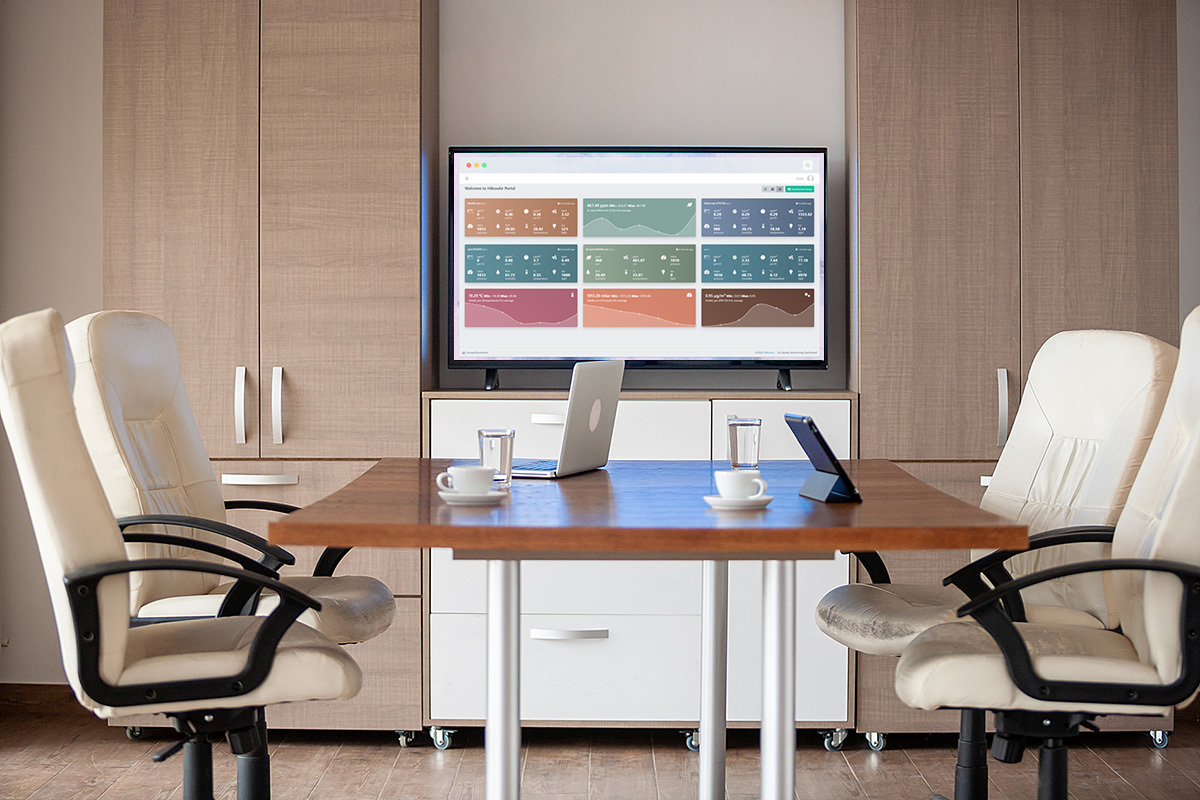Why and how to improve indoor air quality in offices?
Along with thermal comfort, sounds and light, indoor air quality (IAQ) is an integral part of the quality of life at work criteria.
For the majority of working people, the working day essentially takes place in closed environments: offices, open spaces, shops, etc.
Indoor air pollution in these confined spaces exposes employees to adverse health effects and affects their work efficiency.
What are the sources of indoor air pollution in the office?
According to the World Health Organization, indoor air is up to 8 times more polluted than outdoor air.
In the workplace, employees are exposed to different categories of indoor air pollutants:
- – Construction and decoration materials, furniture and office supplies emit Volatile Organic Compounds (VOCs).
- – The inks of printers and photocopiers emit ozone and hydrocarbons (NB: laser printers emit 6 times more VOCs than inkjet printers).
- – Human presence can degrade indoor air quality. Some sick employees can carry viruses that spread through the air through breathing or coughing. Some perfumes or deodorants also emit fine particles. A large presence of employees in the same room increases the CO2 concentration.
- – The use of cleaning and disinfection products by cleaning teams generates fumes of irritating chemical particles.
- – Outdoor pollution can also impact indoor air quality: the proximity of a workplace to traffic routes, construction sites or production sites can increase the concentration of VOCs and fine particles in offices.
The building design is often an aggravating factor in indoor air pollution:
- – In most office buildings, the windows do not open and the air renewal is done only by mechanical ventilation systems. Some “blind” meeting rooms do not even have a window and it is, therefore, impossible to ventilate them.
- – The majority of ventilation systems in offices are outdated.
- – Air conditioning systems, very present in modern workspaces, are even suspected of acting as a diffuser of viruses in the air through offices and floors of buildings.
- – The vast open spaces increase the presence of collaborators in the same room, at the same time increasing the concentration of CO2.
Yet we spend more than 80% of our time in closed environments. This almost continuous exposure to indoor air pollution has a direct impact on the health of employees.
Indoor air pollution: what impact on health at work?
Regular exposure to indoor air pollution can cause, in the short term, various symptoms that affect well-being at work:
- – Fatigue
- – Concentration difficulties
- – Headache
- – Dizziness
- – Irritation of eyes and mucous membranes
Indoor air pollution leads to cognitive impairment and reduced productivity: it directly affects the efficiency of employees.
Thus, in poorly ventilated buildings, with high indoor air pollution, some employees may suffer from Sick Building Syndrome.
Long-term exposure to polluted indoor air can even lead to more serious pathologies such as asthma, lung diseases and even cardiovascular diseases.
These symptoms can even lead to work stoppages or even occupational diseases.
Indoor air pollution is costing businesses money
To measure the impact of indoor air pollution on companies, American researchers looked at the effects of absenteeism and the decline in employee productivity.
The American College of Allergists estimates that poor indoor air quality causes or worsens all illnesses by 50%.
Absenteeism and reduced productivity due to poor indoor air quality cost businesses an average of $480 per worker per year, according to research.
By improving the air quality at work, you protect the health of your employees and boost their efficiency. And your investments can be quickly amortized: according to a study by the ASHRAE (American Society of Heating, Refrigerating and Air-Conditioning Engineers), productivity gains by improving indoor air quality at the workplace.
The special case of COVID-19
The SARS-CoV-2 pandemic has increased the risk of contamination at work. For several months, employees were encouraged or even required and wearing a mask in workspaces was made compulsory.
Despite these reinforced sanitary measures, certain living areas in the office continued to facilitate the airborne spread of the virus: toilets, break areas, company restaurants, etc.
Where mask-wearing was not possible or required, the virus continued to circulate freely through the air.
The monitoring and management of IAQ in the workplace is now a key issue for companies.
How to monitor IAQ in workspaces?
An air quality monitor can help us see things more clearly by providing measurements of the air that is present around us. Knowing what’s in the air can give us peace of mind, reveal sources of pollution and help us take action.
These air quality monitors take a sample of the air in environments to provide certainty about the ppm values of carbon dioxide and other particles found in them. Air quality monitors allow us to understand exactly if space is safe and healthy, or not.
In addition, we must ensure that you take the appropriate measures to improve your IAQ.
Our IAQ monitoring solutions
HibouAir is an air quality monitor specially designed for indoor air quality monitoring. HibouAir comes with a quick & easy set-up. No need for wifi, gateway or cloud connectivity. Its design is sleek and the navigation of its desktop and mobile applications is simple and effective. The app presents information in a logical way, with a clear display of air quality. The device is easy to set up and use, as it doesn’t require connecting or pairing. It displays the current indoor air quality data and shows reading graphs for the past 7 days. The colour codes (green, yellow and red) indicate whether the measurements represent good, moderate or severely polluted air.
Monitor air quality at the office with HibouAir
HibouAir analytic app provides real-time air quality data from multiple devices. A desktop setup with a dongle can provide an overall air quality snapshot of the office. An employee can also use the mobile app to access data whenever they want.

